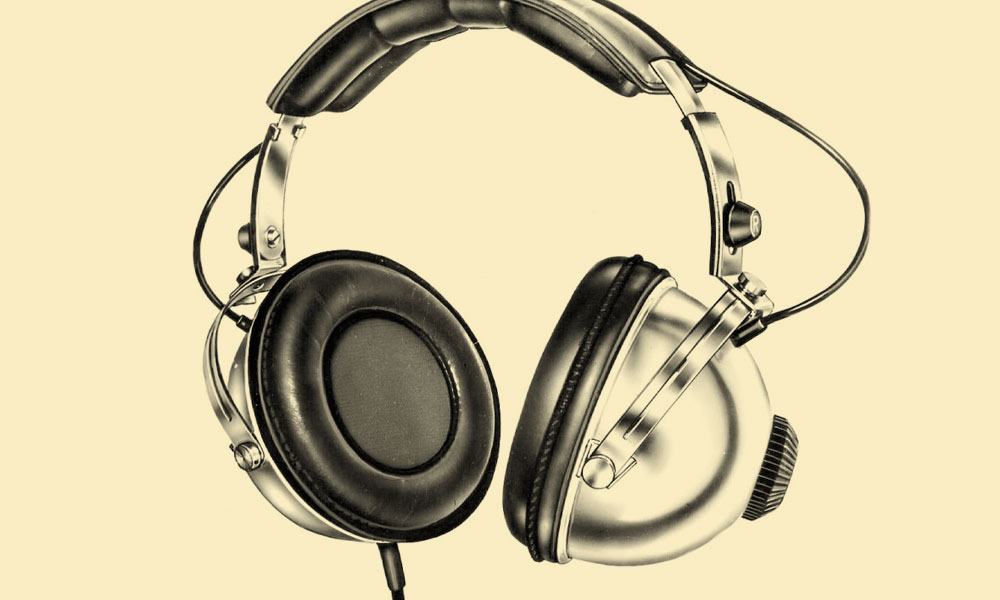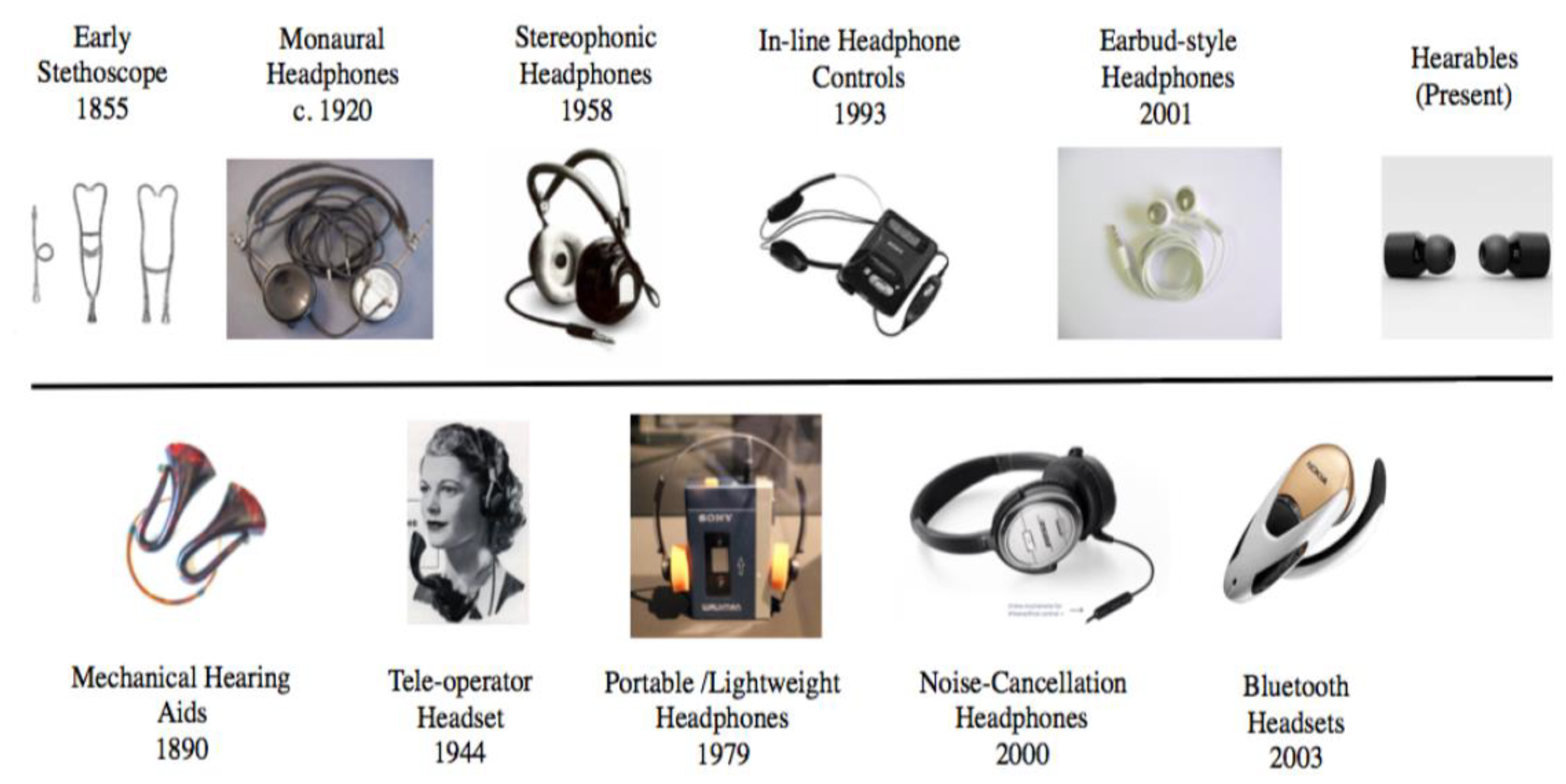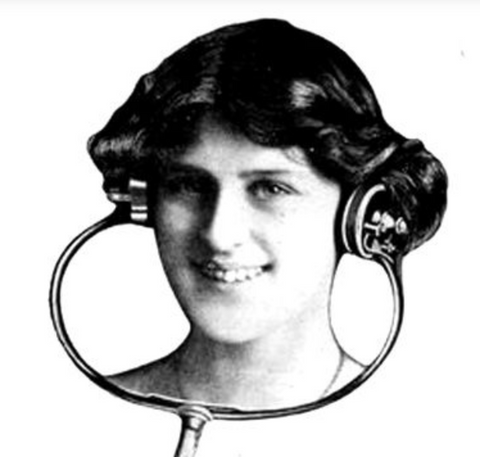The History of Headphones: From Early Inventions to Modern Sound Technology

Headphones have evolved significantly since their inception, transforming from basic sound transmission devices into high-tech gadgets that enhance the listening experience. Whether you’re using them for music, podcasts, or virtual meetings, headphones have become an indispensable part of modern life. But how did they get to where they are today?
In this article, we’ll take a deep dive into the history of headphones, tracing their development from their earliest origins to the sophisticated designs and cutting-edge technologies we see today.
The Beginnings of Sound Transmission: The Early 19th Century
The history of headphones can be traced back to the early days of audio technology. While the concept of transmitting sound directly to the ears had been discussed for centuries, the invention of the telephone in the 1870s marked a key turning point in the development of audio devices.
The Telephone and the Birth of the Earphone
In 1877, Thomas Edison invented the first practical telephone. While it was primarily designed for voice communication, it also laid the groundwork for future headphone designs. The earphone (or “receiver”) used in early telephones, which was worn against the ear, can be considered one of the earliest prototypes of the headphone.
The First Headphones: 1910s
The term “headphones” as we know them today didn’t appear until around the 1910s. In 1910, Nathaniel Baldwin, an American inventor, created the first headphones to improve audio reception for early radios. His design, which consisted of two speakers placed on a headband, was the first known device capable of delivering sound directly into the ears, paving the way for the modern headphones we use today.
Early Uses in Radio Broadcasting
These early headphones were initially used by telephone operators and radio broadcasters. Baldwin’s headphones were hand-made, and they quickly gained popularity among radio enthusiasts. The technology was relatively simple, but it marked the first step toward personal audio devices.

The 20th Century: Expanding Use and Technological Innovations
The 20th century saw tremendous growth in both audio technology and the demand for personal sound devices. With the invention of new technologies like transistor radios, stereos, and the Walkman, headphones became more accessible to the general public.
1920s – The First Dynamic Headphones
By the 1920s, dynamic headphones (also known as moving-coil headphones) were introduced. These headphones used a diaphragm and coil system to create sound, which was more efficient than previous designs. The introduction of dynamic headphones made it easier to produce quality audio and brought about the rise of personal entertainment devices.
1950s – The Rise of the Stereo Headphones
In the 1950s, stereo sound revolutionized how people experienced music. The development of stereo headphones allowed listeners to hear two distinct channels of sound (left and right), enhancing the overall listening experience.
This era also saw the advent of high-fidelity (hi-fi) audio systems, and headphones became a crucial component in the hi-fi revolution, offering sound quality previously unattainable in personal audio equipment.
The 1960s – The Iconic Koss Headphones
One of the most significant advancements in headphone history occurred in the 1960s with the creation of the Koss SP/3. The Koss SP/3 headphones, released by Koss Corporation, became the first commercially successful stereo headphones. They were also the first headphones designed for high-fidelity listening, making them a popular choice for audiophiles.

The Koss SP/3, with its better sound quality and design, helped establish headphones as a serious option for home audio enthusiasts, not just radio operators.
The Portable Revolution: Walkman and the 1980s
The 1970s and 1980s marked a turning point in how people consumed music. The rise of portable music players, especially Sony’s Walkman, revolutionized the use of headphones.
The Walkman Effect
When Sony released the Walkman in 1979, it changed the way people listened to music. The small, portable cassette player became a global sensation, and the accompanying headphones allowed users to enjoy their music privately, wherever they went.
Walkman headphones were compact and portable, designed for comfort and mobility. The success of the Walkman and other portable music devices led to an explosion in the popularity of headphones in the 1980s and beyond.
1980s: The Introduction of Noise-Canceling Technology
In the 1980s, noise-canceling headphones were introduced by Bose Corporation. These headphones used active noise cancellation (ANC) technology to reduce unwanted background noise, providing a more immersive listening experience. This innovation was initially aimed at airline passengers, but it soon became a popular option for music lovers and travelers.
The 21st Century: Wireless and Smart Headphones
The early 2000s and beyond saw the rapid growth of wireless technology and the integration of smart features into headphones, which reshaped how we use and interact with our audio devices.
Wireless Headphones and Bluetooth Technology
In the 2000s, Bluetooth headphones became widely popular. Bluetooth technology allowed users to connect their headphones wirelessly to devices, eliminating the need for tangled cables. As Bluetooth technology improved, so did the sound quality and battery life of wireless headphones.
One of the most iconic innovations in wireless headphones came with Apple’s AirPods in 2016. These true wireless earbuds combined convenience, sound quality, and style, and they set the standard for wireless headphones going forward.

Smart Headphones: The Future of Listening
The latest trend in headphones is the integration of smart technology. Smart headphones feature built-in voice assistants, such as Siri, Google Assistant, or Amazon Alexa, allowing users to control their devices, make calls, or check the weather hands-free.
In addition, modern smart headphones are equipped with features like heart rate monitors, fitness tracking, and even augmented reality (AR), creating a more interactive listening experience.
The Evolution of Headphones: A Timeline
Here’s a quick timeline highlighting key moments in the history of headphones:
- 1910: Nathaniel Baldwin invents the first headphones.
- 1920s: Introduction of dynamic headphones for better sound quality.
- 1950s: Stereo headphones become popular.
- 1960s: The Koss SP/3 headphones become the first successful high-fidelity headphones.
- 1979: The Sony Walkman introduces portable music and compact headphones.
- 1980s: Noise-canceling headphones are introduced.
- 2000s: Bluetooth technology makes wireless headphones popular.
- 2010s: Apple releases AirPods, setting a new standard for wireless audio.
- 2020s: Smart headphones with voice assistants and advanced features gain popularity.
FAQs About the History of Headphones
Q1: Who invented the first headphones?
A1: Nathaniel Baldwin is credited with inventing the first headphones in 1910. His design was primarily for radio use and laid the foundation for future developments in headphone technology.
Q2: When did wireless headphones become popular?
A2: Wireless headphones became widely popular in the 2000s with the introduction of Bluetooth technology. This allowed users to listen to music without the hassle of tangled wires.
Q3: What is the next big innovation in headphones?
A3: The future of headphones lies in smart technology. Innovations such as augmented reality, advanced noise cancellation, and better integration with personal devices and voice assistants are expected to shape the future of headphones.
Conclusion
The history of headphones is a testament to human ingenuity and the quest for better audio experiences. From the earliest earphones used in telephones to the smart, wireless devices we use today, headphones have continuously evolved, adapting to new technologies and consumer needs.
As technology continues to advance, the future of headphones looks even more exciting, with innovations like smart features, augmented reality, and better sound quality on the horizon. Whether you’re a casual listener or an audiophile, the journey of headphones is far from over, and it promises even greater audio experiences in the years to come.
For more insights on the history of headphones and the latest in audio technology, visit [Smithsonian Magazine](https://www.smithsonianmag
.com) or check out MDPI Inventions for in-depth articles on technological advancements.

